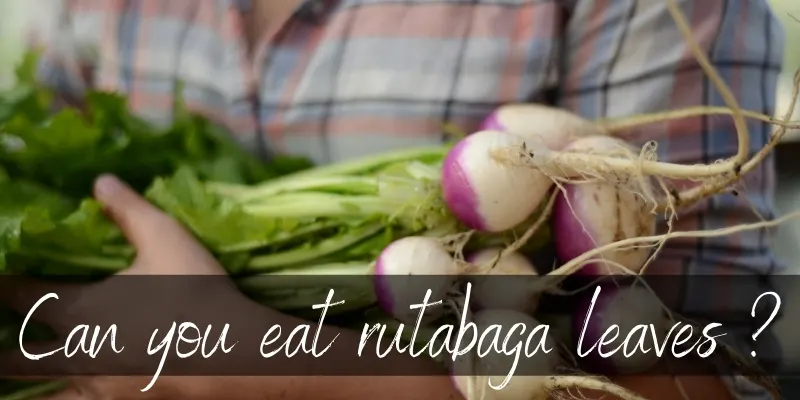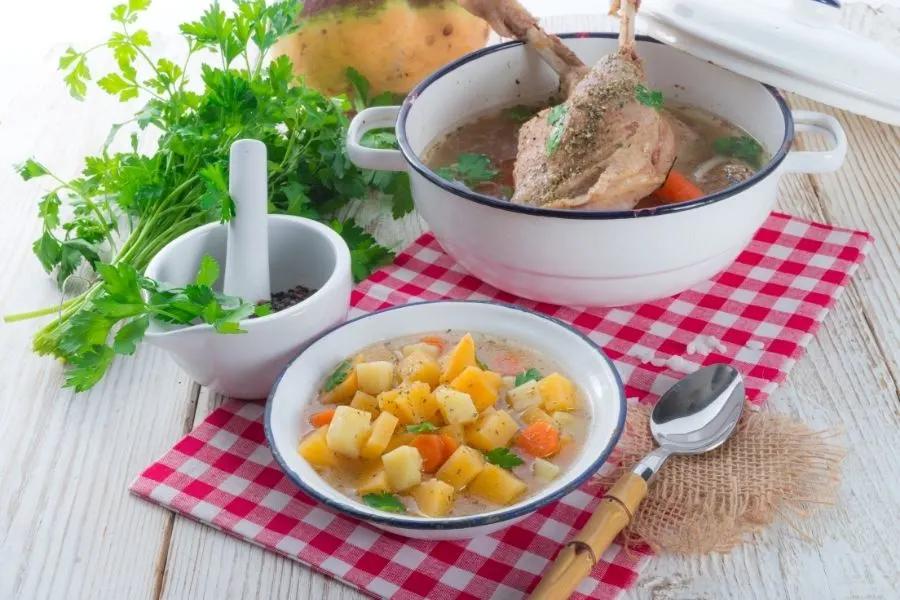Rutabagas are really a wonder of nature. An ancient mix between cabbage and turnip, rutabagas have baffled and delighted everyone’s taste buds for longer than we can remember.
There’s a reason they’re not in the limelight like potatoes, broccoli, or salad. If cut wrong rutabagas can get pretty bitter. But what about their greens, has anyone ever touched that ?
After all if the root is edible why wouldn’t the leaves be ? So let’s take a look at rutabaga leaves and see if they’re really edible or not.

Are rutabaga leaves edible ?
Yes, rutabaga leaves are indeed edible, just like turnip leaves. You would have to get younger leaves, as the older ones a re a little tough. Wherever you get a thicker part, like the veins, be sure it will be extra fibrous.
As for where to get rutabaga leaves, you can find them on the rutabagas themselves if you’re at a farmer’s market. IF you’re any farther from that, like a supermarket or general store, then the leaves are already cut off.
The reason is to pack as many rutabagas as possible into the crates. And since most folks don’t think about the leaves, there’s no real reason for them to include the leaves during shipping.
Still, if you can find rutabagas that are freshly uprooted and cleaned, give them a try.
Read also: Best Rutabaga Substitutes
What do rutabaga leaves taste like ?
Rutabaga leaves have a mustardy, peppery punch to them, with a slightly bitter aftertaste. They definitely resemble their cabbage parent, in that the aftertaste can be too much for those who don’t like broccoli, asparagus, or even cauliflower. We’re not even mentioning Brussel sprouts.
Once cooked, rutabaga leaves become more tender, less bitter, and just a little bit sweet. They might not be for everyone but in a hearty stew or soup they work just fine.

Their texture is something to get used to
We need to mention their texture. It’s best to roughly chop them and braise or boil until they soften. Otherwise they’re just too tough. Another point is their fibrous texture. Some people are okay with them, some aren’t. For example if you don’t like how fibrous asparagus is, you won’t like rutabaga leaves.
Keep in mind that the stems are way too fibrous to really use properly in anything, so you best bet is to just use the leaves.
Rutabaga leaves are best cooked
You can treat rutabagas leaves like kale leaves. Marinate them in something acidic, like with vinegar or lemon juice tp soften them. This way, if you eat them raw they will be much easier to chew through and you can cover up any of the strong tastes you don’t like.
Most folks really prefer them cooked, mostly for the texture, and then for the flavor.
This of cabbage cores, if you’ve ever had some. They’re spicy, peppery, a little bitter and have a nice crunch to them. Rutabaga leaves resemble that when raw, only they’re a little tough to chew through.
Braised or sauteed, they soften a little and become much easier to eat. We recommend trying them raw and then cooked, to see the difference for yourself.
Like spinach, they will cook down
Remember that all greens will cook down. Rutabaga leaves will cook down, like spinach leaves. But they don’t carry their own water and release it, unlike spinach or mushrooms.
This means that if you’re trying to cook the greens in a pan by themselves, you’ll have to add a couple tablespoons of liquid, or plain water to steam them.
Read Also:Are Banana Leaves Edible ?
Most folks eat just the roots
Even folks who grow rutabagas at home end up just eating the roots most of the time. Either because the leaves aren’t that great, or because they just don’t know they can.
But you can always mix the two into a nice stew, along with some beef and carrots and potatoes. Rutabaga roots don’t take that long to cook through, and their bitterness mostly goes away when cooked.
If you add some rutabaga leaves to the boiling pot towards the last 5-10 minutes, you’ll get a nice texture in your meal and successfully use a an entire rutabaga, root to leaves !

